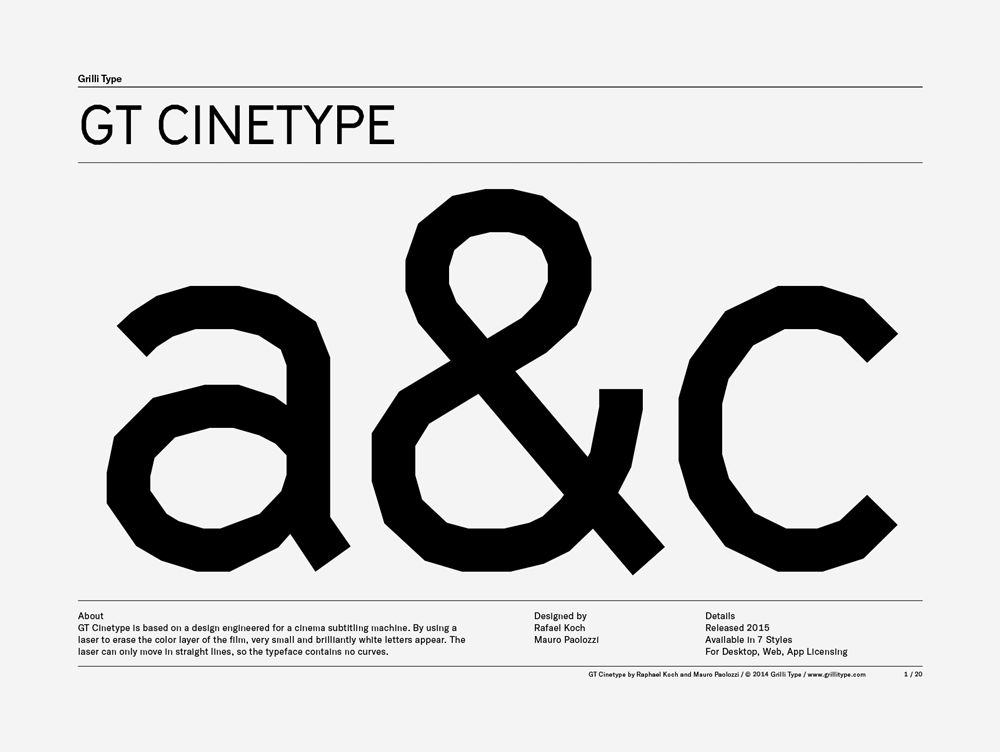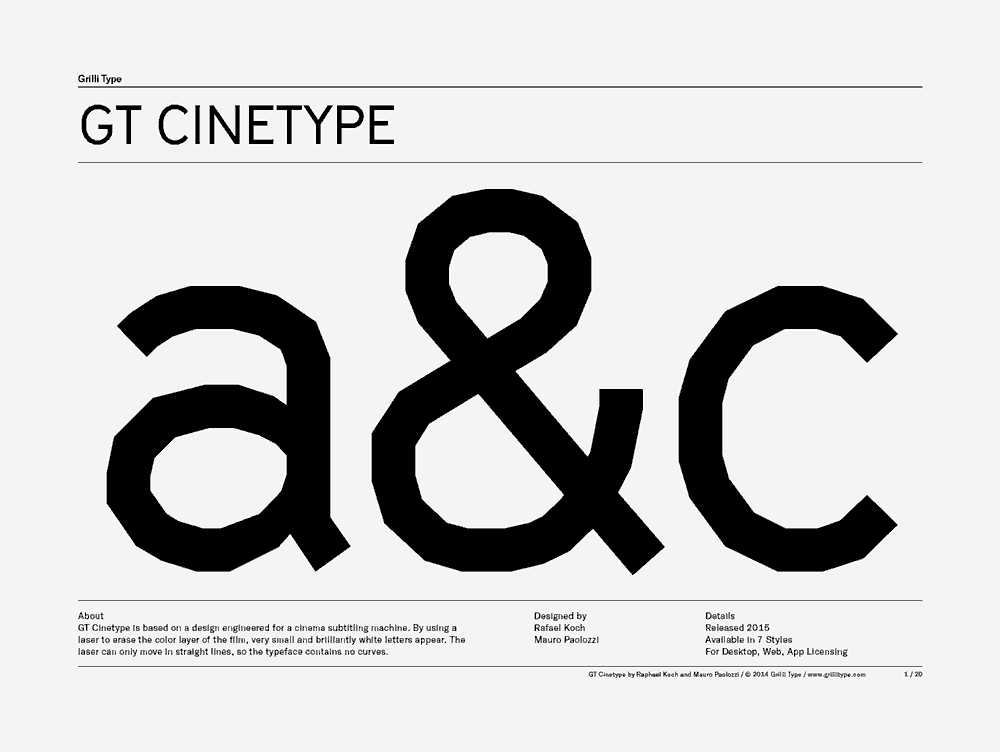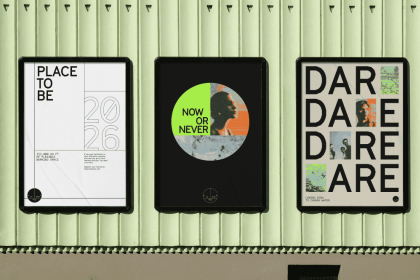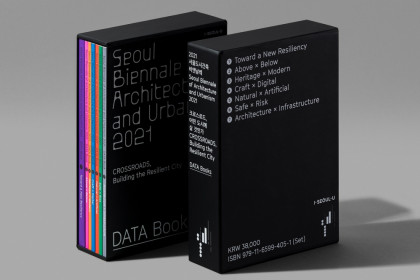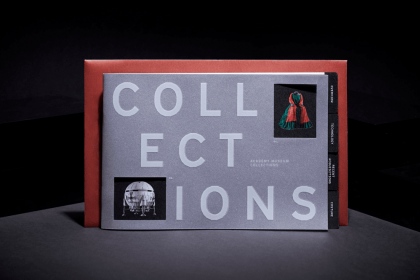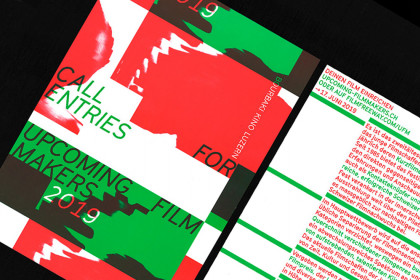GT Cinetype
Family overview
- Light Italic
- Regular Italic
- Bold Italic
- Mono
- LightAguirre, der Zorn Gottes 1972 by Werner Herzog with Klaus Kinski, Ruy Guerra, Helena Rojo
- Light ItalicTroll 2 1990 by Claudio Fragasso with Michael Stephenson, George Hardy, Margo Prey
- RegularRequiem for a Dream 2000 by Darren Aronofsky with Ellen Burstyn, Jared Leto, Jennifer Connelly
- Regular ItalicEraserhead 1977 by David Lynch with Jack Nance, Charlotte Stewart, Allen Joseph
- BoldTexas Chainsaw Massacre 1974 by Tobe Hooper with Marilyn Burns, Edwin Neal, Allen Danziger
- Bold ItalicEl Topo 1970 by Alejandro Jodorowsky with Alejandro Jodorowsky, Brontis Jodorowsky, José Legarreta
- MonoCitizen Kane 1941 by Orson Welles with Orson Welles, Joseph Cotten, Dorothy Comingore
- Settings
Typeface information
GT Cinetype is based on a design engineered for a cinema subtitling machine. By using a laser to erase the color layer of the film, very small and brilliantly white letters appear. The laser can only move in straight lines, so the typeface contains no curves.
Typeface features
OpenType features enable smart typography. You can use these features in most Desktop applications, on the web, and in your mobile apps. Each typeface contains different features. Below are the most important features included in GT Cinetype’s fonts:
- CASE
- Case sensitive forms
(ROBOCOP)
- ONUM
- Oldstyle figures
10.03.1985
Typeface Minisite
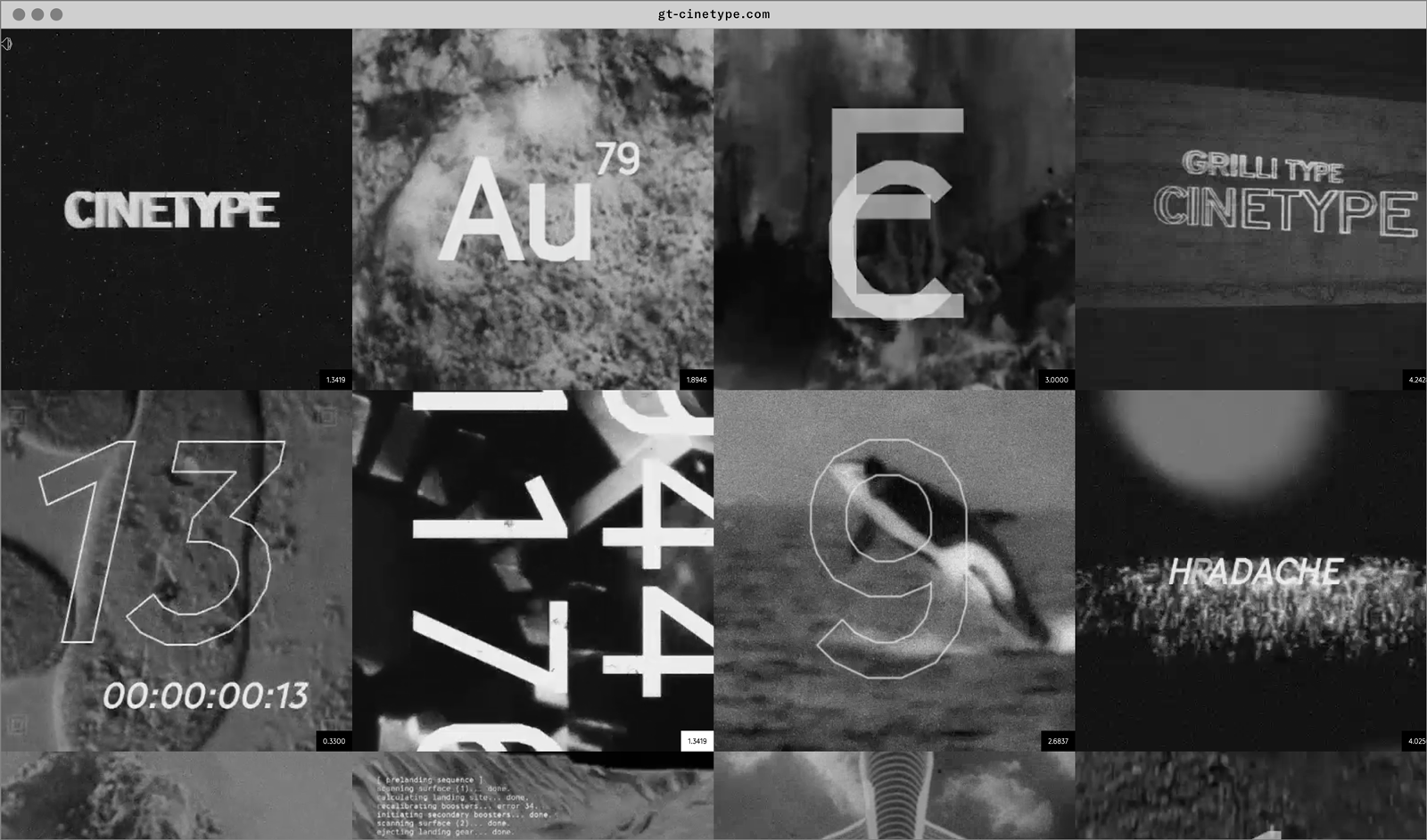
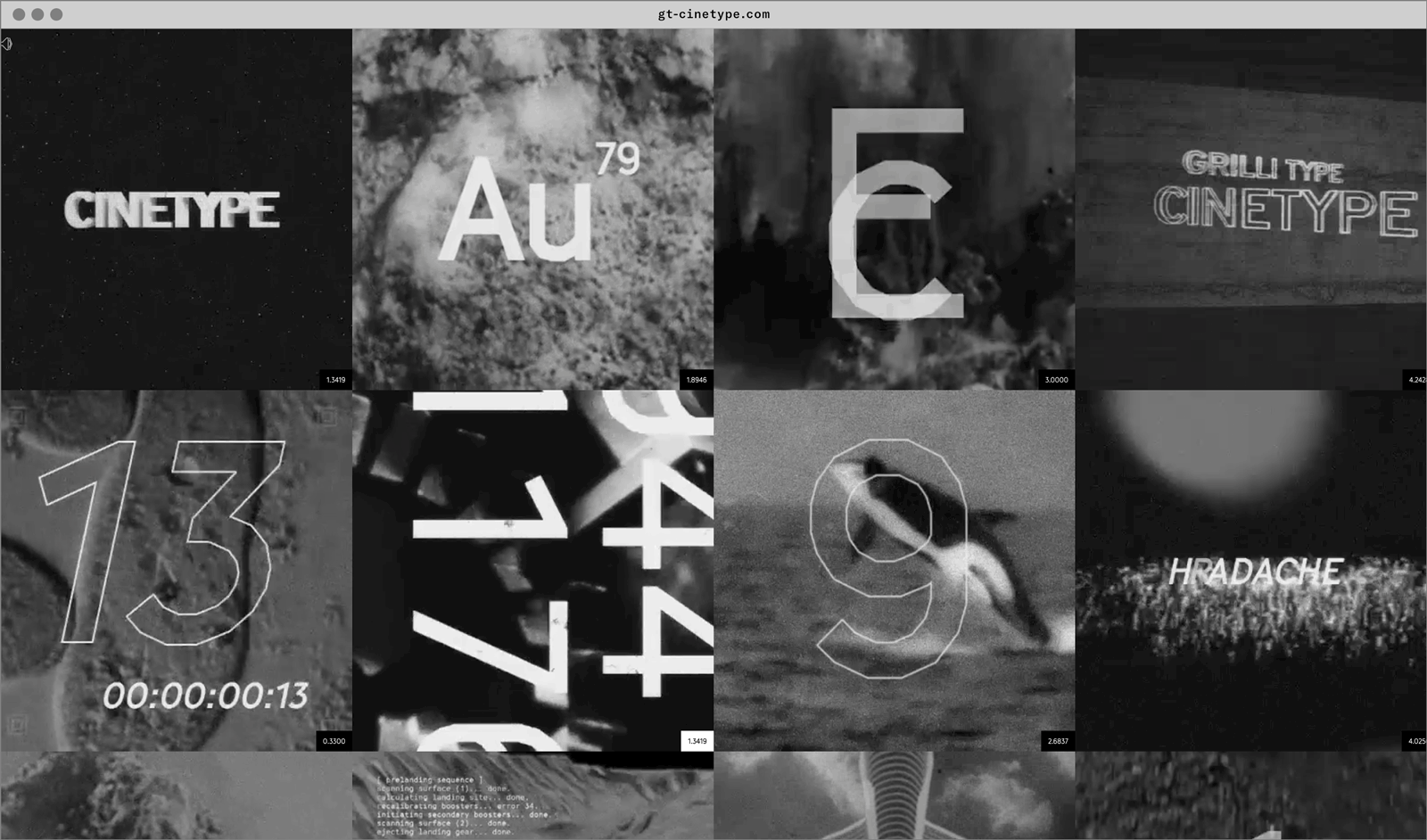
- Visit the GT Cinetype minisite to discover more about the typeface family’s history and design concept.
GT Cinetype in use
